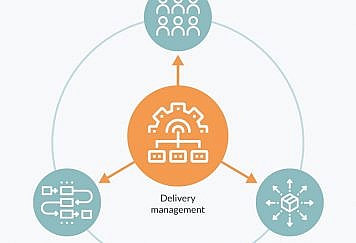Let’s cut to the chase – in the fast-paced business environment of today, being efficient is what truly matters. Automation is quickly finding its place in the heart of almost all business operations, employee management included, thanks to its ability to offer speed, accuracy, and scalability.
But, as we race towards this thrilling future, we’re confronted with a bit of a pickle: How can we integrate automation while still holding onto the invaluable human touch?
This isn’t just some high-brow theoretical debate; it’s a genuine concern that carries significant weight for the success and cultural health of your company. The real challenge is finding the sweet spot where we can fully harness the power of technology for improved efficiency without compromising on the human connection that sparks engagement and productivity.
The Need for Automation in Employee Management
A study by McKinsey showed that a whopping 56% of typical “hire-to-retire” tasks could be automated, leading to a 20% increase in efficiency. This doesn’t just present a minor adjustment; it’s a revolutionary shift in how we manage people.
By embracing automation, HR professionals can dedicate more time to strategic, high-value tasks, instead of drowning in paperwork. However, automation isn’t just about efficiency either. It’s also about accuracy.
Humans make mistakes. But in team management, errors can be expensive. Automation minimizes the risk of mistakes in everything from payroll to performance reviews, ensuring that your team members are treated fairly and accurately.
The Importance of Keeping Employee Management Human
People aren’t cogs in a machine. They need human interaction, understanding, and empathy. They need to feel valued and heard. Automation can’t do that.
It wouldn’t be a stretch to say that employees are the lifeblood of any organization. They’re on the front lines, interacting with customers, creating products, and driving innovation. They also have their own needs, desires, and motivations. You need to connect with them on a human level to engage and motivate them. You need to understand their needs, recognize their contributions, and support their growth.
No matter how sophisticated our technology becomes, it can’t replicate that human touch. It can’t provide the personal connection that employees need to feel valued and engaged.
Strategies for Balancing Automation and Human Touch
Strategy 1: Personalized Communication
Automation can handle a lot of communication tasks, but it’s crucial to keep them personalized. Use automation tools that allow for personalization tokens, so your employees don’t feel like they’re receiving mass-produced letters. Communication isn’t just about sharing information; it’s also about nurturing relationships. Even when communicating on a large scale, personalized messages can help strengthen these relationships.
Sometimes, this can be as simple as including their name in automated emails or as complex as tailoring learning and development resources to their specific needs and interests, with assets like performance management review templates playing a crucial role in ensuring accuracy and consistency.
Strategy 2: Employee Involvement in Automation Decisions
When deciding what to automate, make sure to include your employees. This not only ensures that automation will genuinely simplify their tasks, but it also gives them a sense of ownership and control. It demonstrates that their opinions matter.
Involving employees in automation choices can also help mitigate the anxiety and uncertainty that often accompany automation. Many employees fear that automation might render their roles redundant. By including them in the decision-making process, you can help ease these fears and show them that automation is a tool designed to assist them, not replace them.
Remember, your employees are the experts in their roles. They know which tasks are tedious, which ones are error-prone, and which ones could be done more efficiently. By including them in automation decisions, you can leverage this expertise and ensure that your automation initiatives are focused on areas where they’ll make the most difference.
Strategy 3: Regular Human Interaction and Check-ins
Even in an automated environment, it’s crucial to maintain regular human contact. This could be through weekly one-on-one meetings, monthly team gatherings, or frequent company-wide updates. Make sure that employees have regular opportunities for human connection if they need them. These interactions should be seen as a vital part of your management strategy, not just an add-on.
Regular check-ins offer a platform for employees to express their concerns, share their ideas, and feel acknowledged. They also allow managers to provide feedback, recognition, and support, thereby enhancing the employee experience. Regular check-ins also help build trust and rapport between managers and their teams, fostering a positive work environment.
Strategy 4: Using Automation to Enhance, Not Replace, Human Interaction
Rather than viewing automation as a replacement for human interaction, we should see it as a way to magnify our human capabilities. It’s like a backstage ally, taking care of the everyday chores, while managers get to invest their energy and time into the more substantial and meaningful aspects of their roles.
This could translate into having deeper coaching sessions with team members, aiding them in honing their skills or brainstorming together to find solutions to intricate challenges. By integrating automation into work in this manner, companies are able to craft an environment that marries the prowess of automation with the vibrancy of human collaboration.
Final Thoughts
Automation is a powerful tool in our hands, augmenting human abilities rather than replacing them. Taking over the monotonous, routine tasks, allows us to zero in on the tasks that call for our creative flair, analytical prowess, and emotional sensibility. This transition not only enlivens the work experience for employees but also gives rise to superior quality results.
In the end, while automation indeed heightens efficiency, it’s the human spark that ignites innovation, solves intricate puzzles, and fosters a work culture where employees feel appreciated and involved.
Follow TechStrange for more!





